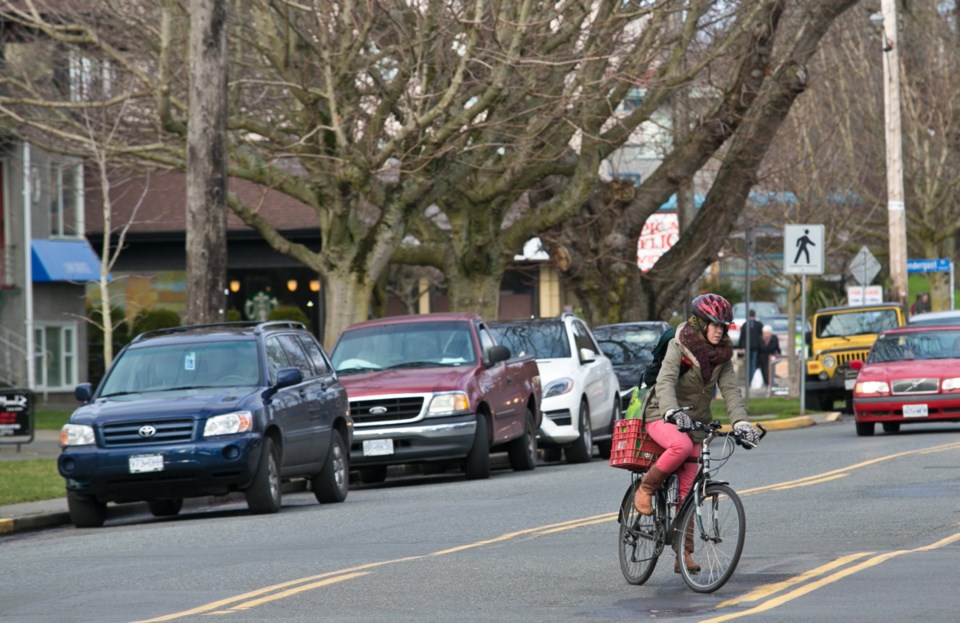It might take traffic-reader signs that smile, but Victoria is continuing on the path of slowing down traffic.
Acknowledging that reducing speeds involves more than just putting up signs, Victoria councillors Thursday endorsed staff recommendation to step up education and enforcement in reduced-speed zones introduced two years ago.
As well, city staff will follow up on a suggestion from Coun. Ben Isitt to research the cost of putting speed reader signs in every neighbourhood.
“I think that would help build neighbourhood buy-in for safer speeds and also show that the city is being responsive to neighbourhood concerns,” said Isitt, who originally championed lower speed limits with former city councillor Shellie Gudgeon.
Mayor Lisa Helps suggested staff look at “out of the box” options such as signs sophisticated enough to display a frown to speeders and a smiley face to people travelling under the limit. “It’s not funny, it actually changes behaviour. People want the digital sign to smile at them, right, because it feels good,” Helps said.
Isitt said the city has to roll out “a fairly robust and steady program of speed humps, traffic circles and other interventions” to make city streets safer. Where they have been installed, “it is widely celebrated by the community and adds to the ambience of those neighbourhoods.”
“I think every neighbourhood is entitled to have a very active and extensive program of traffic calming,” Isitt said.
In 2014, councillors amended the streets and traffic bylaw, reducing speed limits on several city streets to 40 km/h from 50 km/h and reducing the speed limit on Cook Street between Southgate Street and Dallas Road to 30 km/h from 50 km/h. The objective was to make streets safer and to reduce the number of collisions.
But traffic monitoring in 2015, when compared to 2014, showed the reduced-speed zones “are having only a minor impact on vehicle speeds” — only a two per cent reduction in speed — with average speeds still above posted limits. Collision rates have not dropped in the reduced-speed zones.
B.C. Transit has complained that the lower limits make it difficult for buses to stay on schedule on some routes.
Helps said one of the biggest takeaways from the exercise has been confirmation that most people drive 10 km/h over the posted limit. “Essentially, if we want people to go 50, we have to sign for 40. So if we want people to go 40 maybe we should sign for 30. I’m not suggesting that, but it’s interesting that people will go on average about 10 kilometres above the speed limit that’s posted.”
Staff say further monitoring is needed to better understand the impacts of the speed limit changes. Meanwhile, councillors have endorsed several recommendations, including:
• Install speed-reader boards along reduced-speed zones and implement a public awareness campaign.
• Continue to work with B.C. Transit to maximize transit performance in reduced-speed zones.
• Introduce speed-control elements in new street designs.



